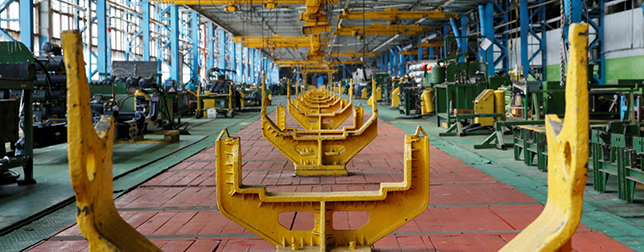Wearable devices have greatly affected the lives of average consumers. From health and fitness tracking to contactless payments, a ton of cool feature exists on these wearable devices.
With the rise of IoT and connected machinery, these devices also have potential uses in manufacturing. Manufacturing.net’s Kayla Matthews discusses some potential uses within this sector.
- Safety Awareness and Injury Prevention
This concept could be approached in many ways. For starters, you can use simple wearables like wristbands, connected clothing or headwear to present safety and environmental information to the wearers. Another aspect is work injuries. Standing for long periods can be bad for the back and limbs. Using “Chairless Chair” by BMW, employees can enhance their comfort on the floor. It’s essentially a harness-type wearable you can convert into a chair at the push of a button.
Read more How to Utilize Wearable Tech For A Successful Workplace Wellness Program
- Improved Process Efficiency and Productivity
With the help of wearable technology, workers can augment or improve existing processes and functions within industrial and commercial settings. On the production line, staff members could utilize the technology to stay focused on what they’re doing, obtain additional info or deliver remote orders or commands. In a warehouse setting, order fulfillment employees can find goods and ordered products faster by using the situational and contextual data.
- Hands-Free Training
In manufacturing, training tends to be very hands-off by nature. Workers can use wearable tech to make this process more modern and efficient. General Motors, for example, leveraged Google Glass to provide a unique, improved training process for their employees.
- Augmented Reality (AR) and Predictive Modeling
Google Glass, Microsoft HoloLens and similar technologies merge the gap between digital and physical realities through something called augmented reality. A fitting example of this technology is Epson’s Moverio BT-350 Smart Glasses. Embedded camera allows the glasses to overlay digital information related to whatever the wearer is looking at. While building something, can see the next and even future steps in the process as if they already completed them.
Read more Samsung and ALICE Debut Gear S3-Based Hotel Communications Service
- Remote Management
IoT and connected sensors, especially in a manufacturing plant, allow managers to see how everything is operating at a glance, remotely. When an entire workforce adopts wearable technology, the same can happen for personnel. Managers and decision makers can see where everyone is, what they’re doing, how productive they are or even potential bottlenecks or problems.













